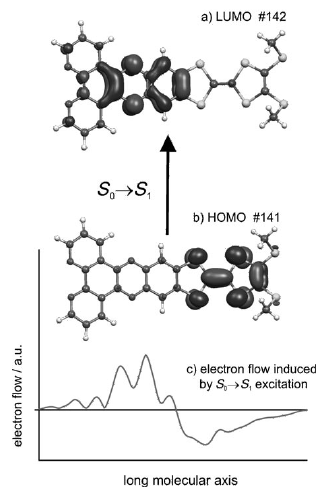-
Synthesis of new ethynylbipyridine-linked mono- and bis-tetrathiafulvalenes: electrochemical, spectroscopic, and Ru(II)-binding studies
C. Goze, S.-X. Liu, C. Leiggener, L. Sanguinet, E. Levillain, A. Hauser and S. Decurtins
Tetrahedron, 64 (7) (2008), p1345-1350


DOI:10.1016/j.tet.2007.11.056 | unige:32 | Abstract | Article HTML | Article PDF
Two new ethynylbipyridine-linked mono- and bis-tetrathiafulvalene (TTF) derivatives, together with a Ru(II) complex, were synthesized using Sonogashira coupling reactions and characterized by UV/vis spectroscopy and cyclic voltammetry. They display a clear electrochemically amphoteric behavior consisting of two reversible single-electron oxidation waves (typical for TTF derivatives) and one reversible single-electron reduction wave (bpy) and act as donor–acceptor (D–A) systems. Furthermore, for the Ru(II) complex, a quite intense fluorescence originating from the 3MLCT state is observed.
